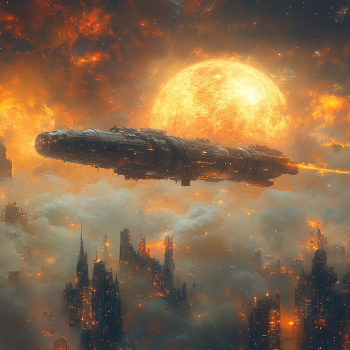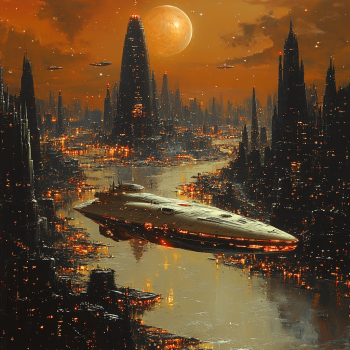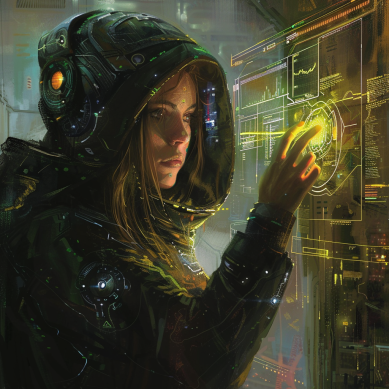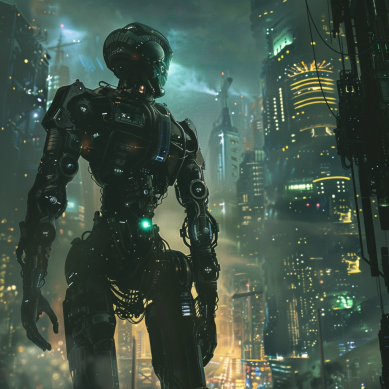Disclaimer: This post contains affiliate links. This means I may earn a commission should you choose to sign up for a program or make a purchase using my link.
In this comprehensive guide, we’ll explore the essential elements of writing an epic space opera. Whether you’re a seasoned writer looking to delve into this genre or a newcomer inspired to launch your own star-spanning adventure, these tips will help you navigate the stars and craft unforgettable interstellar tales.
Disclaimer: This post contains affiliate links. This means I may earn a commission should you choose to sign up for a program or make a purchase using my link.

1. Understanding the Core Elements of Space Opera
Before diving into the writing process, it’s crucial to understand what makes a space opera distinct within the broader realm of science fiction. Here are some of the core elements that define the genre:
- Expansive Settings: Space operas take place on a grand scale, often spanning galaxies, multiple planets, or even entire universes. The scope of the setting is vast, with richly developed worlds that feel real and lived-in.
- Epic Conflict: At the heart of every space opera is a monumental conflict, often involving galaxy-spanning wars, political intrigue, rebellion against oppressive regimes, or existential threats to civilization. These conflicts drive the plot and provide a backdrop for personal struggles and growth.
- Diverse and Memorable Characters: From heroic pilots and cunning smugglers to enigmatic aliens and ruthless dictators, space operas are known for their wide array of colorful characters. These characters often have complex motivations and evolve significantly throughout the story.
- Blend of Science Fiction and Fantasy Elements: While rooted in science fiction, space operas often incorporate elements more typical of fantasy, such as ancient prophecies, mythic quests, or the battle between good and evil. Technological plausibility takes a back seat to the grand narrative.
- Heroic Themes and Emotional Stakes: Space operas emphasize grand, sweeping themes—love, honor, sacrifice, loyalty, and redemption—often through personal journeys against a backdrop of cosmic-scale drama. Emotional stakes are as high as the physical ones.
By understanding these elements, you’ll have a foundation on which to build your space opera. Remember, it’s not just about spaceships and laser battles; it’s about crafting an emotional, expansive story that resonates with readers.

2. Building Your Universe: World-Building in Space Operas
World-building is one of the most critical aspects of writing a space opera. You’re not just creating a single world but potentially an entire galaxy of civilizations, species, cultures, and histories. Here are some tips to help you build a universe that feels expansive, immersive, and real:
Create a Rich, Diverse Setting
The setting of a space opera is often as much a character as the heroes and villains themselves. Whether it’s a bustling space station, a desert planet with an ancient civilization, or a hidden rebel base on a jungle moon, each location should have its own unique feel, culture, and history.
- Planets and Systems: Develop diverse planets and star systems, each with its own ecosystem, climate, society, and government. Think about how the environment shapes the inhabitants’ way of life.
- Political Landscapes: Consider the political dynamics at play. Are there galactic empires, federations, independent planets, or outlaw territories? How do they interact? Is there tension or war between them?
- Alien Species and Cultures: Introduce various alien species with distinct cultures, belief systems, and societal norms. Make sure they feel fleshed out and plausible, with their own languages, customs, and conflicts.
- Technology and Economy: Establish the level of technological advancement in your universe. Is there faster-than-light travel? Do they use energy-based weapons or slug-throwers? Consider how technology impacts trade, warfare, communication, and daily life.
Develop a Deep History and Lore
A well-developed backstory adds depth to your universe. Consider the ancient events that shaped the current political and social order. Wars, revolutions, and pivotal discoveries can all serve as a foundation for the present-day conflicts in your story.
- Historic Conflicts and Alliances: What major wars or treaties have defined the current state of the galaxy? Are there old grudges or alliances that affect present politics?
- Myths and Legends: Just like in fantasy, space operas often draw on myth and legend. This could include prophecies, ancient weapons of immense power, or legendary heroes whose actions still shape events.
- Societal Evolution: How have different species and civilizations evolved over time? How have their histories influenced their current behaviors, cultures, and alliances?
Create Compelling Factions and Organizations
Space operas often feature multiple factions with conflicting interests. These factions could be political (e.g., a Galactic Empire vs. a Rebel Alliance), ideological (e.g., those who favor technological advancement vs. those who reject it), or cultural (e.g., different alien species vying for dominance).
- Develop Factions with Clear Goals: Make sure each faction has clear, believable goals. Why are they fighting? What do they stand to gain or lose?
- Avoid Monolithic Societies: Even within a faction, there should be internal divisions, political intrigue, and differing opinions. This adds realism and depth to your world.

3. Crafting Memorable Characters with Depth
Characters are the heart of any great story, and space operas are no exception. They are your readers’ entry point into your universe, and their journeys will keep readers engaged from start to finish.
Create Complex, Multi-Dimensional Characters
Epic space operas thrive on characters who are larger than life but grounded in relatable human emotions and flaws.
- Heroes and Anti-Heroes: Consider crafting a protagonist who is flawed yet compelling. They could be a disillusioned former soldier, a rogue trader with a heart of gold, or a reluctant leader pulled into a rebellion. Anti-heroes, in particular, can provide an interesting dynamic against a backdrop of moral ambiguity.
- Villains with Depth: A great villain is more than just evil for the sake of being evil. Consider their motivations—what drives them to their actions? A compelling antagonist could be a fallen hero, a misunderstood ruler, or a zealot believing they are doing the right thing.
- Supporting Characters: Don’t overlook your supporting cast. Allies, mentors, rivals, and sidekicks can add richness to your narrative. Ensure they have their own arcs and aren’t just there to support the protagonist.
Develop Dynamic Character Arcs
Character development is key to engaging readers in a long-form epic. A character’s growth should mirror the overall narrative arc, evolving as they face new challenges, make tough decisions, and confront their own flaws.
- Personal Conflicts and Growth: As your characters navigate the larger galactic conflict, they should also face internal struggles—grappling with fear, doubt, or past traumas. This makes their journeys more relatable and compelling.
- Relationships and Dynamics: Space operas often feature strong group dynamics, such as found families, reluctant allies, or intense rivalries. How do your characters’ relationships evolve over time? Are there betrayals, reconciliations, or unexpected alliances?
- The Hero’s Journey or Beyond: Many space operas follow the traditional Hero’s Journey structure, but don’t be afraid to subvert or innovate beyond it. Perhaps your hero fails and must rise again, or the line between hero and villain blurs.

4. Plotting an Epic Story: Balancing Grand and Intimate Narratives
In space operas, the stakes are often cosmic. Saving entire worlds or altering the fate of a galaxy. However, the most memorable stories are those that balance these grand narratives with intimate, character-driven moments.
Establish High Stakes and Tension
From the beginning, establish the stakes of your story. What is at risk? Who stands to lose the most? The conflict should be evident and compelling, drawing readers into the tension.
- Layered Conflicts: Combine external conflicts (such as battles, political intrigue, or races against time) with internal ones (such as moral dilemmas, personal loss, or crises of faith). This layering makes the story richer and more engaging.
- Pacing and Momentum: Keep the story moving forward. Space operas should balance slower, character-focused scenes with high-octane action sequences, keeping readers on the edge of their seats.
Weave Subplots and Multiple Perspectives
An epic story often benefits from multiple viewpoints, allowing readers to see different sides of the conflict and understand various motivations. Consider having subplots that intertwine with the main narrative.
- Interconnected Subplots: Subplots can provide depth to the main storyline and flesh out secondary characters. For instance, a subplot about a spy within the enemy’s ranks can provide crucial insights or revelations that affect the main plot.
- Multiple POVs: Using multiple points of view can enhance your narrative, especially in a sprawling space opera where different factions, worlds, and perspectives are involved. Be careful to ensure each POV is distinct and adds value to the story.
Build to Epic Climaxes and Resonant Resolutions
Space operas are known for their epic climaxes—huge battles, dramatic confrontations, or universe-altering decisions. Ensure your plot builds naturally to these moments and that they feel earned.
- Foreshadowing and Setup: Lay the groundwork for your big moments early in the story. Foreshadow significant events, introduce Chekhov’s guns, and build anticipation.
- Satisfying Endings: The ending should resonate emotionally and tie up the narrative threads. While not every plot point needs to be resolved (especially in a series), the main arcs should feel complete, leaving readers satisfied yet eager for more.
5. Balancing Science Fiction and Fantasy Elements
While space operas are set in futuristic and technological settings, they often incorporate fantastical elements, such as mystical powers or ancient prophecies. Finding the right balance between science fiction and fantasy is key to crafting a compelling space opera.
- Plausibility vs. Imagination: Space operas don’t need to adhere strictly to hard science fiction rules, but there should be an internal logic that makes the universe feel consistent. Readers are willing to suspend disbelief as long as the story follows its own rules.
- Mythical and Mystical Elements: Consider integrating elements like ancient prophecies, legendary artifacts, or even cosmic forces that resemble magic. However, ensure these elements serve the narrative and character development rather than overshadow them.
- Blending Genres: Don’t be afraid to borrow from other genres to enhance your space opera. Elements of horror, romance, political thriller, or even noir can add new dimensions to your story and make it stand out.
6. Writing Vivid and Thrilling Action Sequences
Space operas are known for their epic space battles, daring rescues, and intense duels. Writing these scenes requires a balance of clarity, tension, and sensory detail.
- Visual Clarity: Ensure readers can visualize what’s happening. Use clear, concise language to describe the setting, movements, and stakes. Avoid overly technical jargon that could confuse or alienate readers.
- Raise the Stakes: Action scenes should have a purpose beyond spectacle. They should advance the plot, reveal character, or escalate tension. Make sure there’s something at stake for your characters—whether it’s their lives, their mission, or their moral code.
- Pace and Rhythm: Use short sentences and paragraphs to convey urgency and speed during action scenes. Vary the pacing to create dynamic and engaging sequences, then slow down to build tension, then ramp up for a climactic moment.
- Emotional Impact: Remember that the best action scenes resonate emotionally. Whether it’s a duel between former friends or a desperate last stand, the emotional stakes should be as high as the physical ones.

7. Thematic Depth and Philosophical Undertones
Epic space operas often explore deep philosophical questions and themes, such as the nature of power, the cost of war, or the search for identity and belonging.
- Explore Big Ideas: Use your narrative to explore big ideas that resonate with readers, such as freedom vs. oppression, technology vs. nature, or individualism vs. collectivism. These themes should be woven organically into the story and character arcs.
- Moral Complexity: The best space operas thrive on moral ambiguity. Challenge your characters (and readers) to question their beliefs and make difficult choices. Avoid black-and-white portrayals; instead, delve into the shades of gray.
- Personal and Universal Themes: Blend personal themes with universal ones. A character’s personal journey of redemption, for example, can mirror a larger theme of political liberation or cultural renaissance.
Charting Your Course Among the Stars
Writing an epic space opera is a daunting but incredibly rewarding endeavor. It requires careful world-building, compelling characters, intricate plotting, and a balance of both grand and intimate storytelling. But with passion, imagination, and attention to detail, you can create a universe that feels alive and stories that captivate readers from start to finish.
Remember, a great space opera is more than just spaceships and laser battles. It’s about exploring the human (or alien) condition, delving into complex moral quandaries, and taking readers on an unforgettable journey across the stars. So, arm yourself with these tips, fire up your starship engines, and set course for your very own interstellar adventure.
Now it’s your turn! Start drafting your space opera today, and don’t forget to share your world-building ideas and other interesting tidbits in the comments below. Together, let’s create new galaxies worth exploring!
Other Sci-Fi Posts
- How to Build a Dystopian World for Your Cyberpunk Novel.
- How to Make Love and Technology Work Together in Sci-Fi Romance
- Space Exploration in Sci-Fi: How to Build New Worlds & Cultures
- 30 Post-Apocalyptic Sci-Fi Prompts for Thrilling Survival Stories
- How to Create a Compelling Post-Apocalyptic World in Science Fiction
- 20 Hard Sci-Fi Prompts to Explore New Scientific Concepts
- Hard vs. Soft Sci-Fi: How to Create Engaging Sci-Fi Worlds

Newsletter Sign-Up